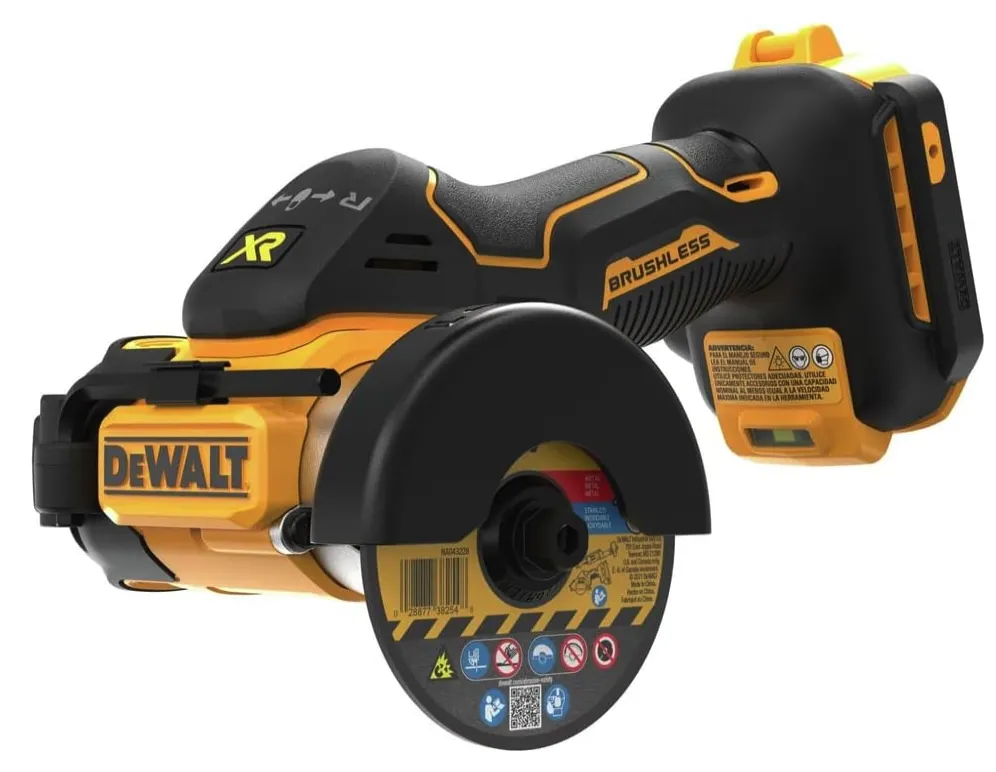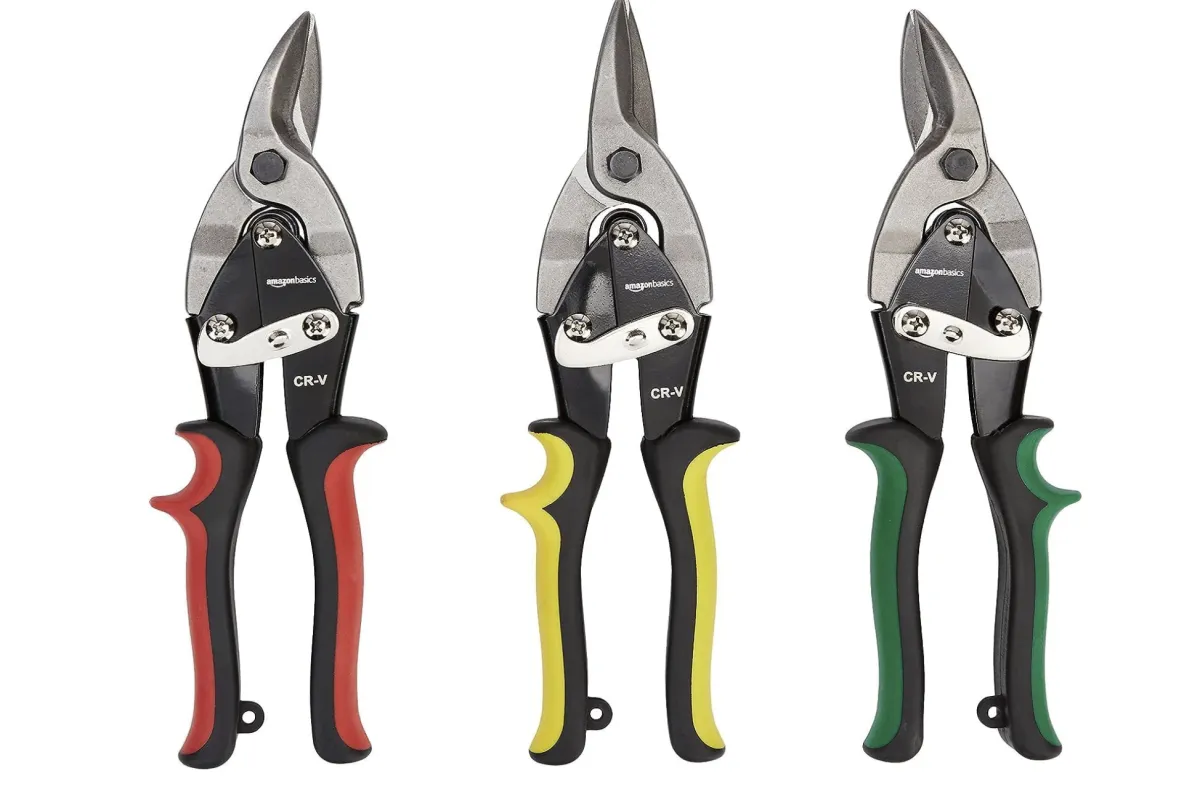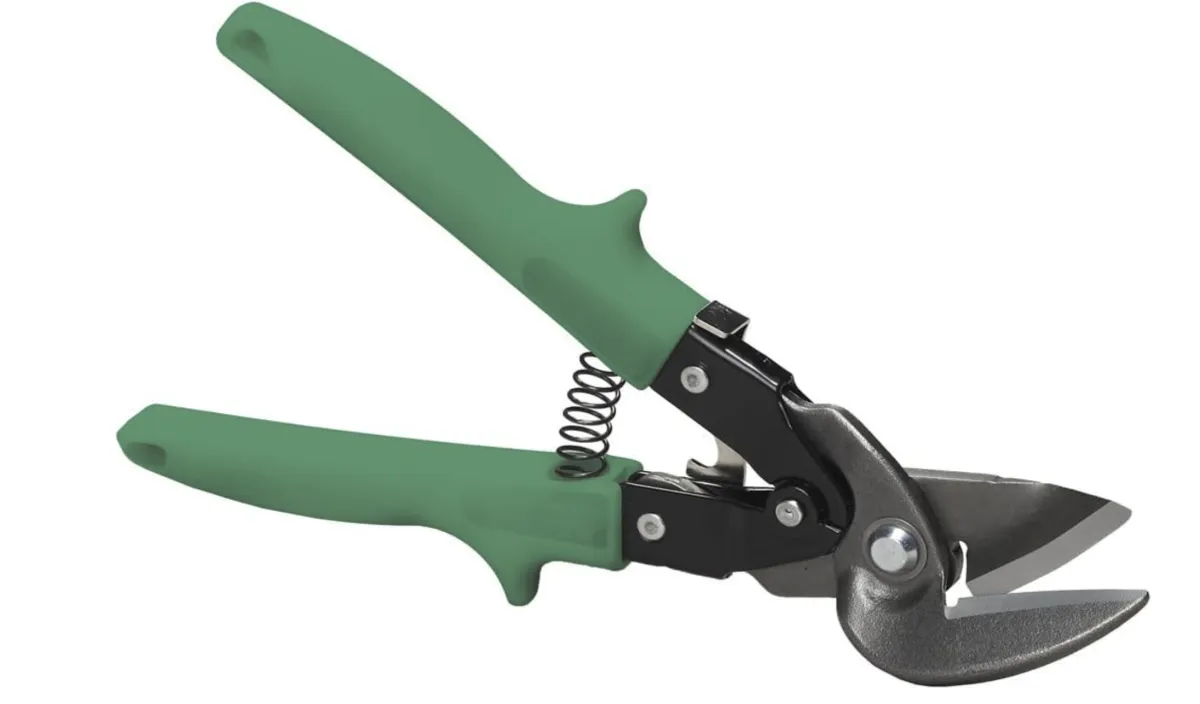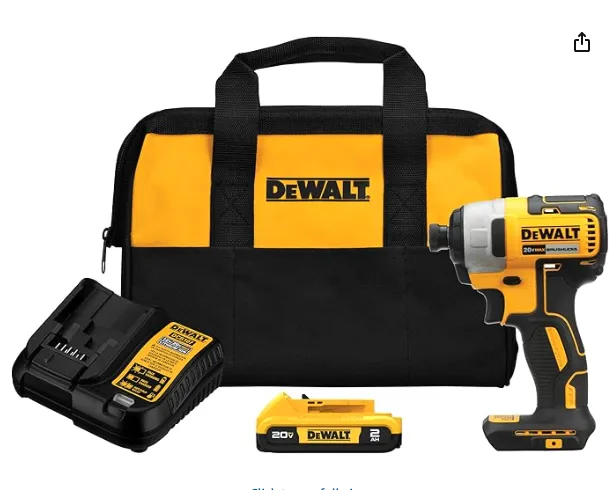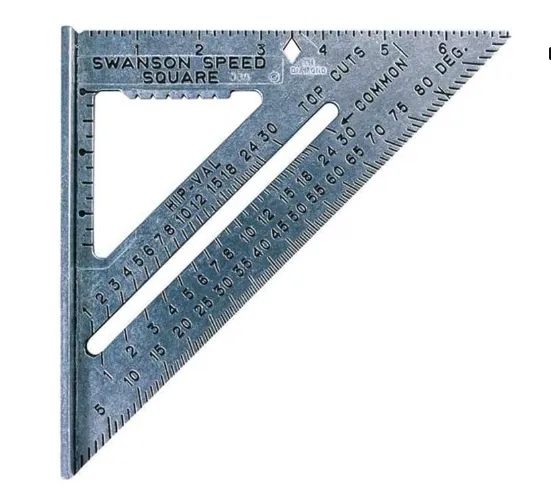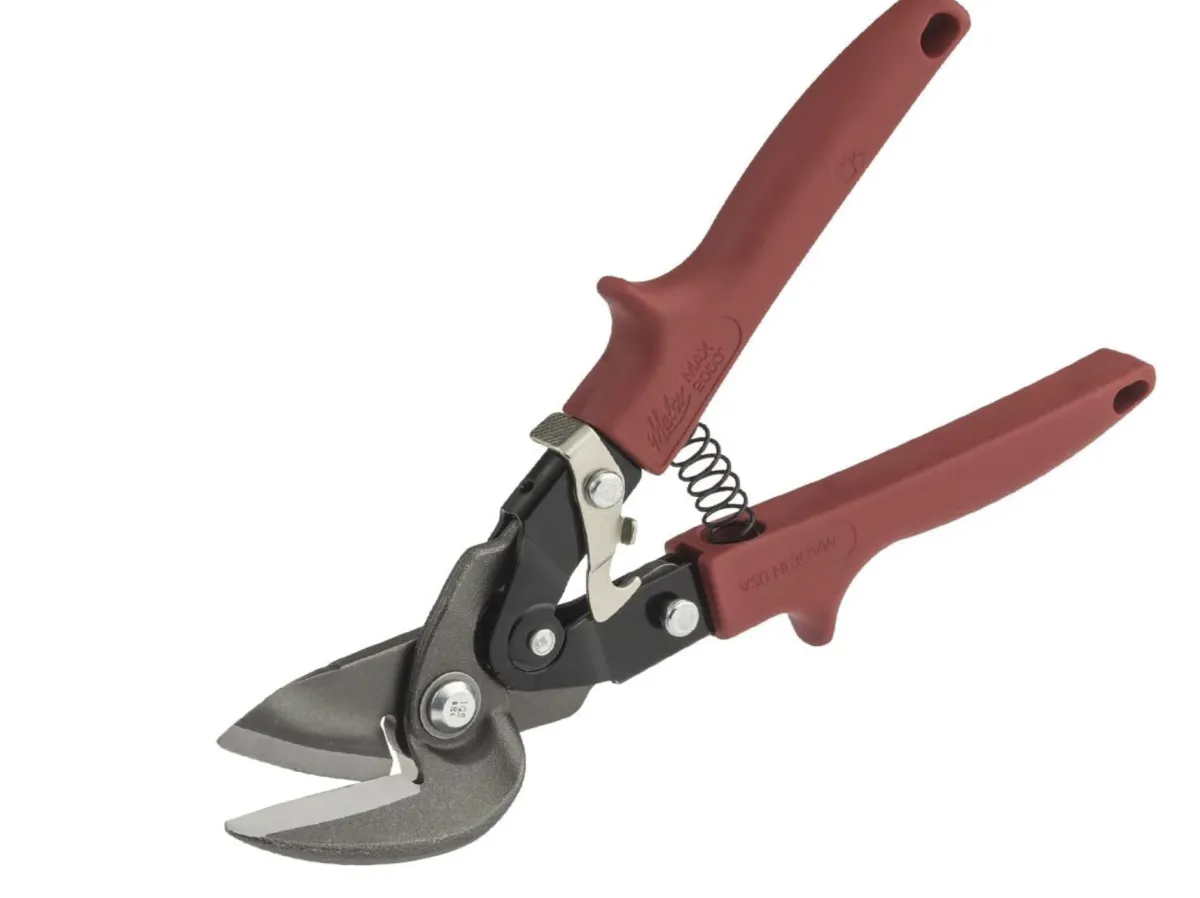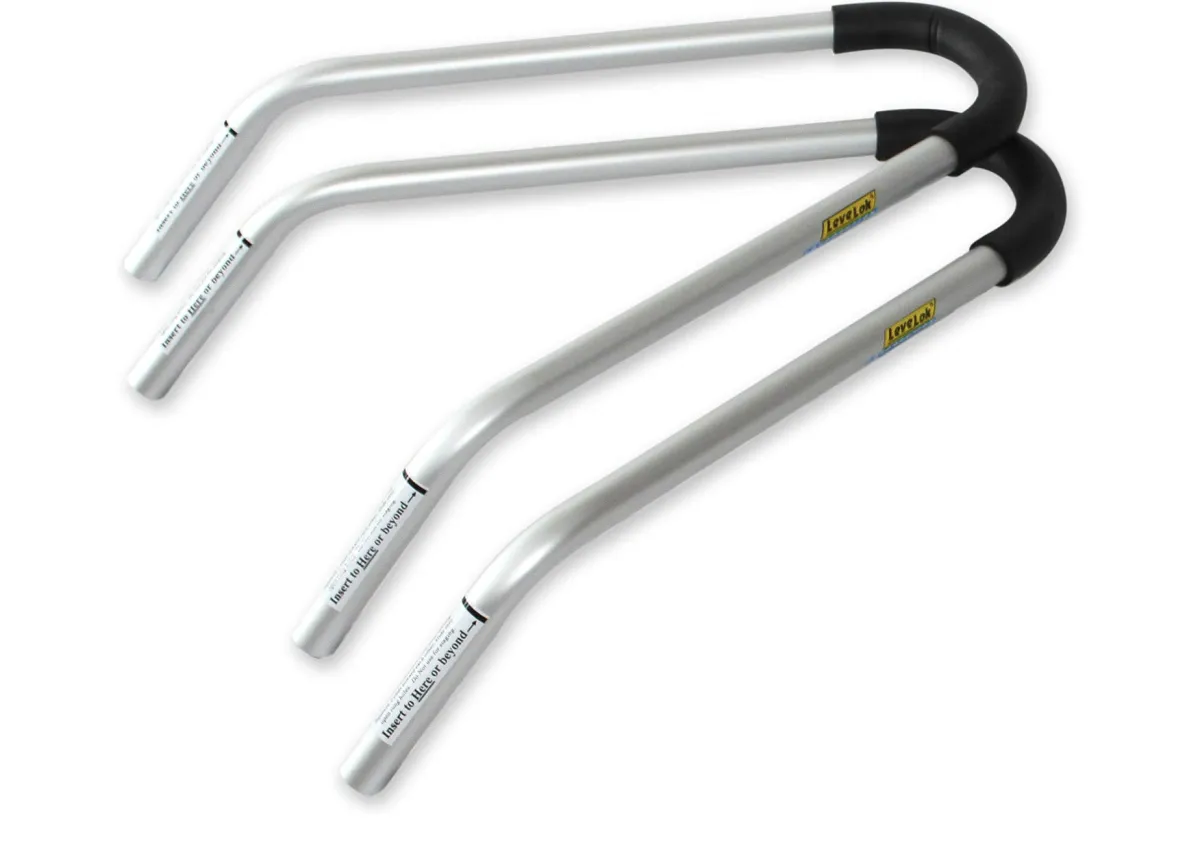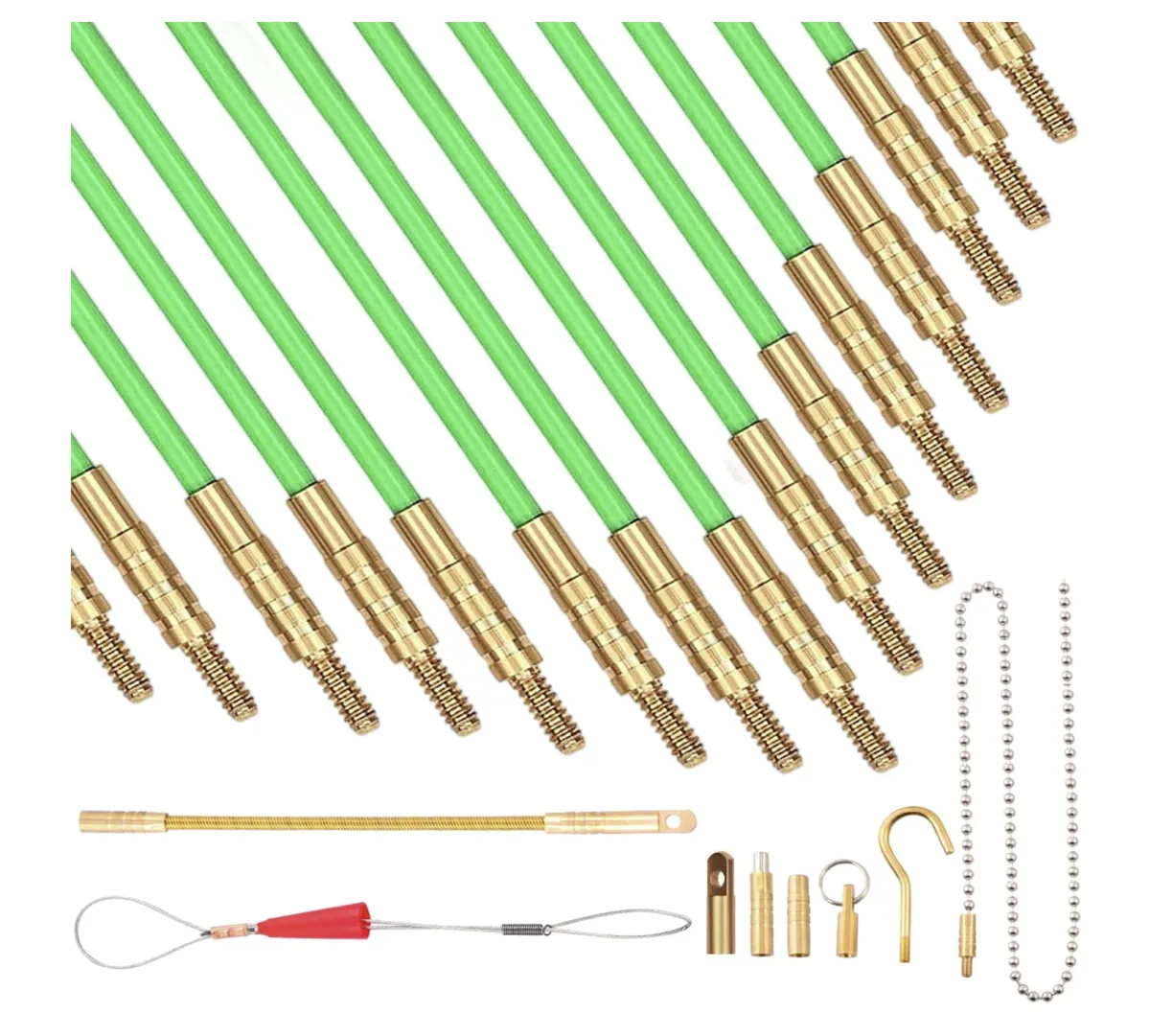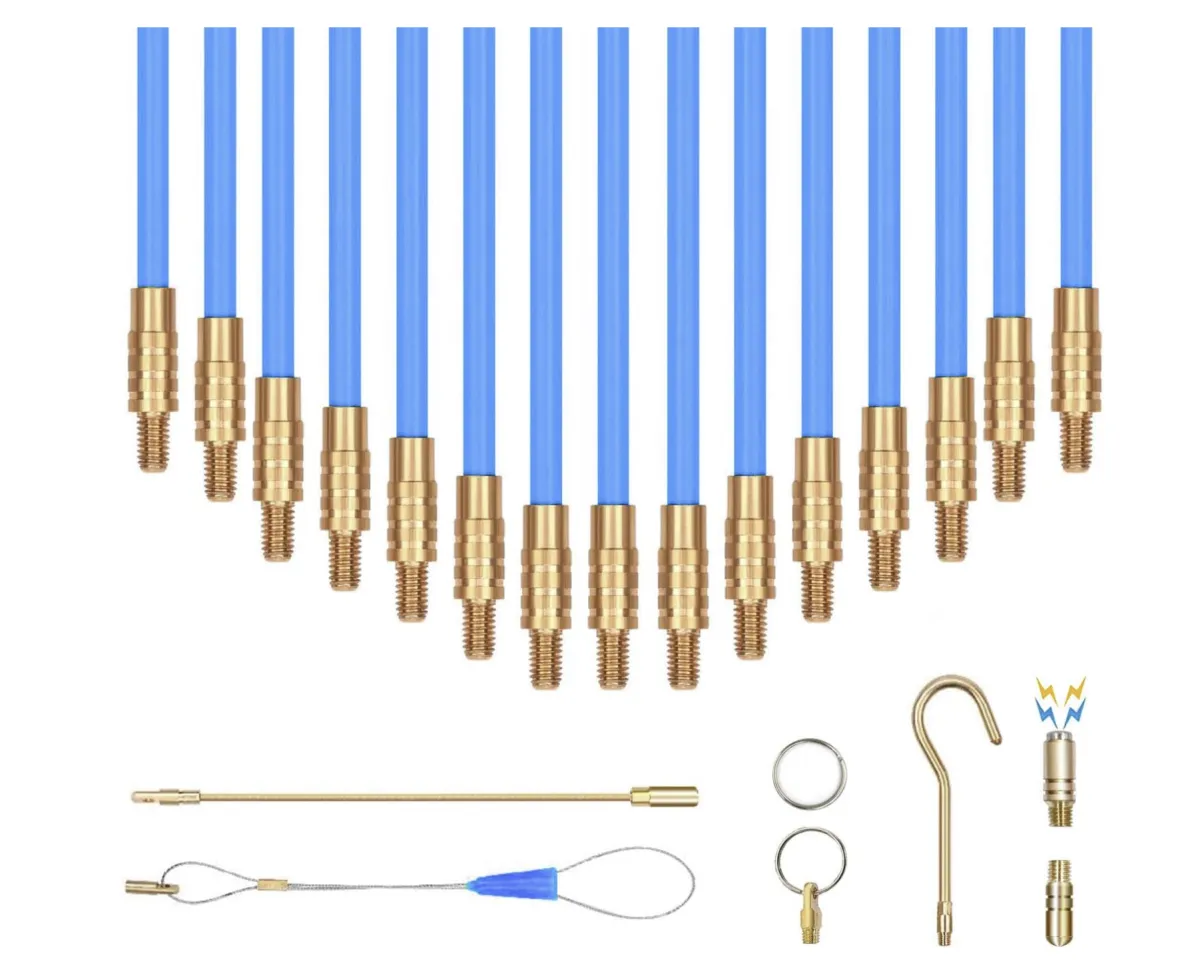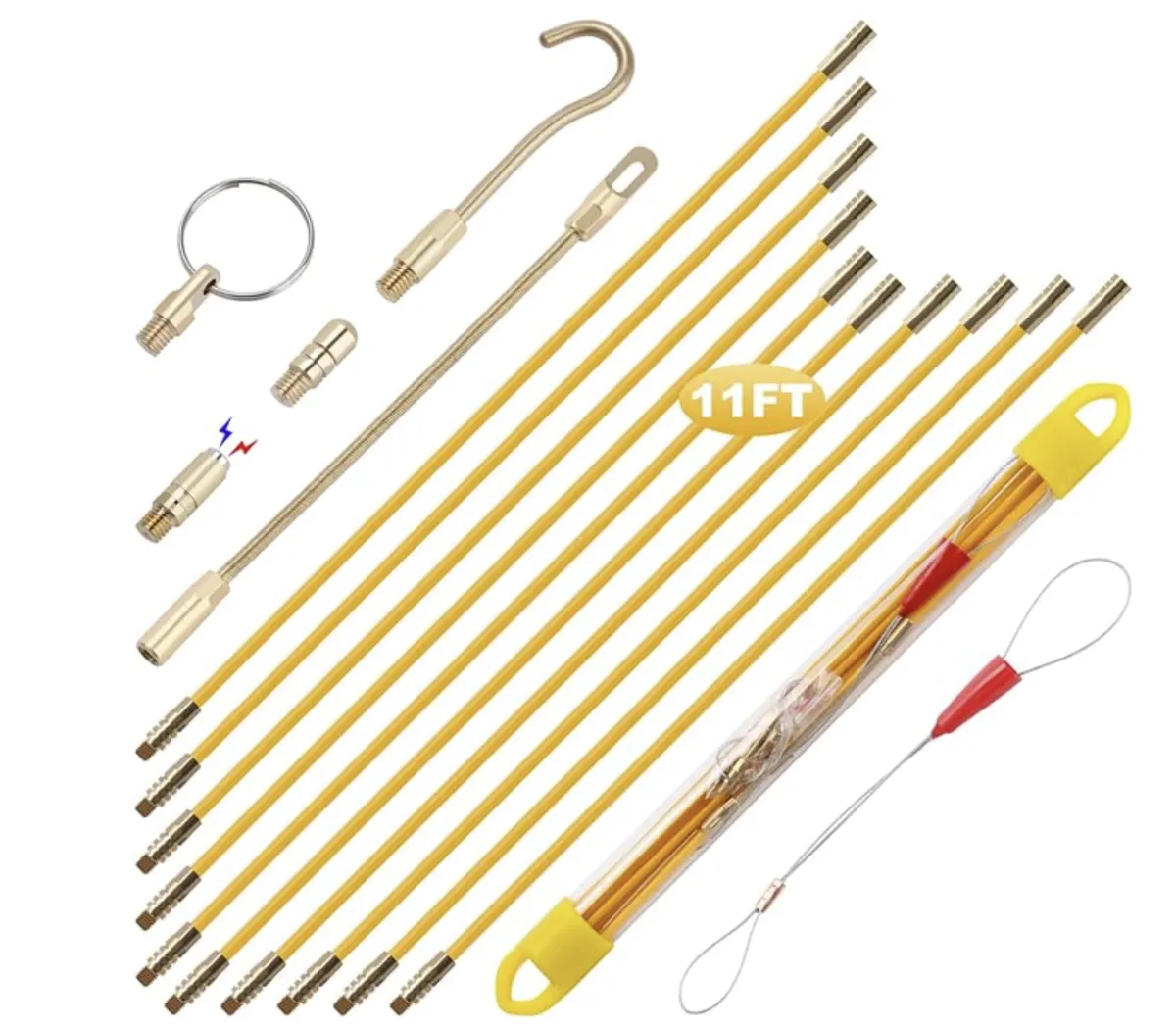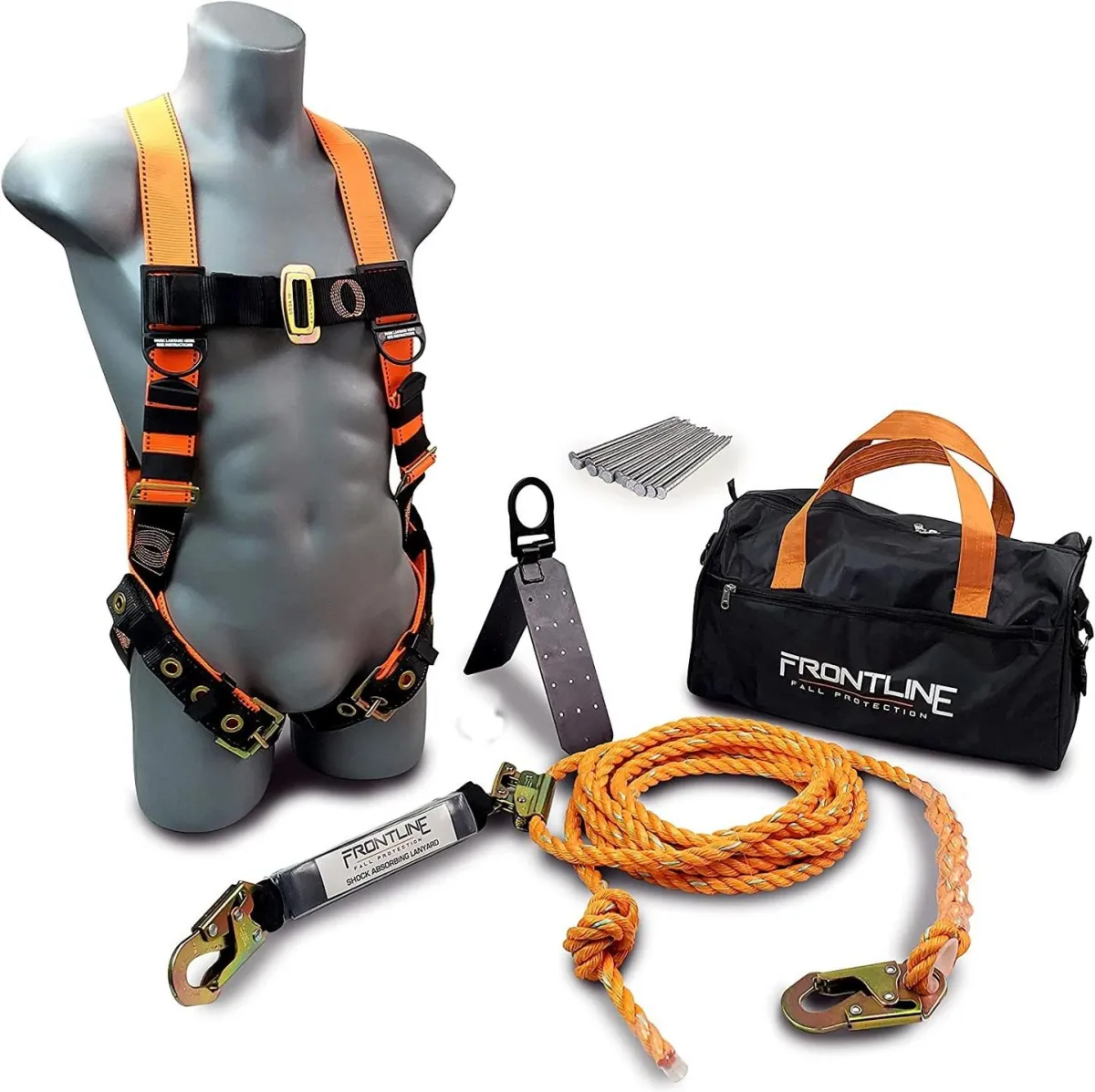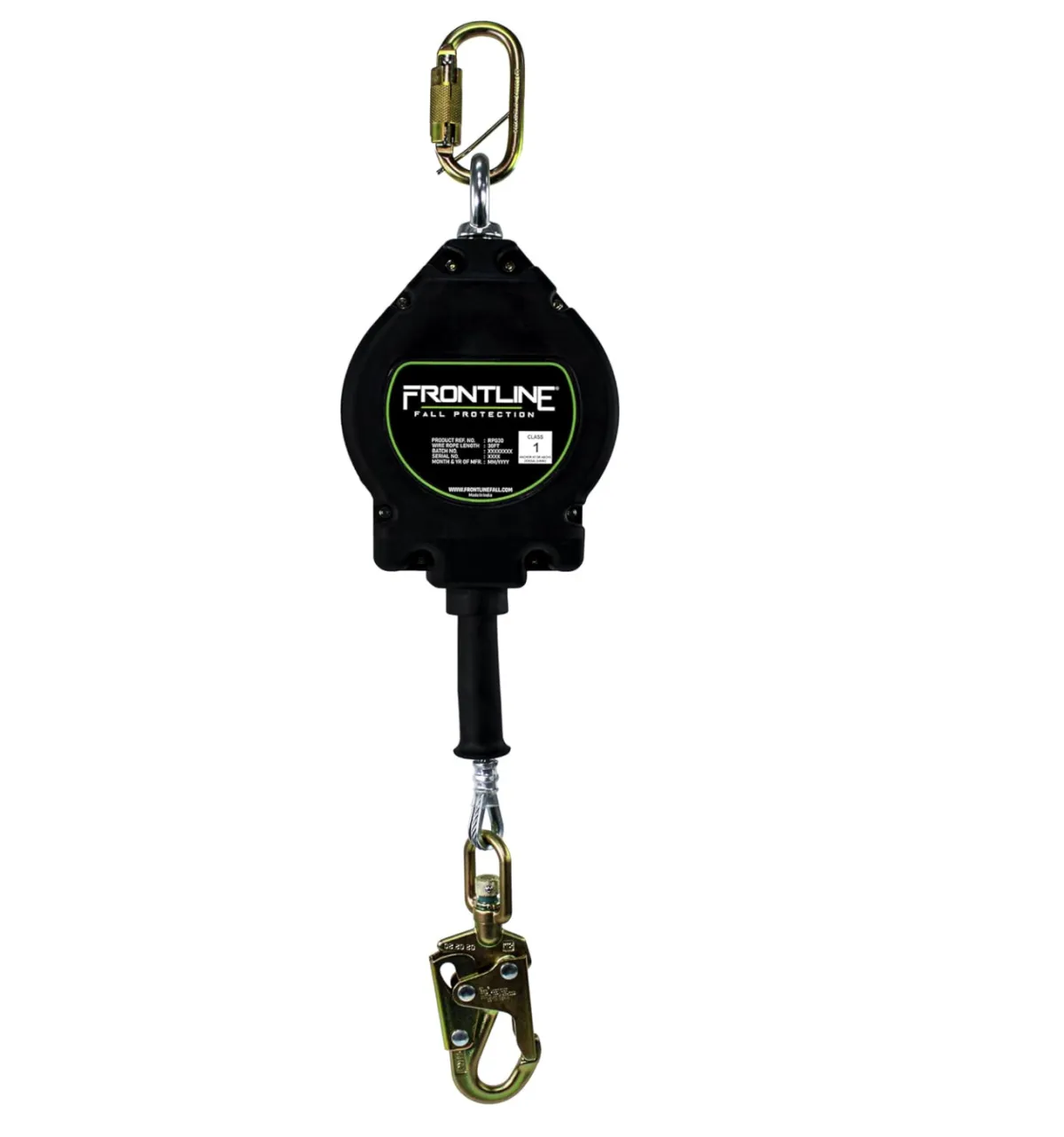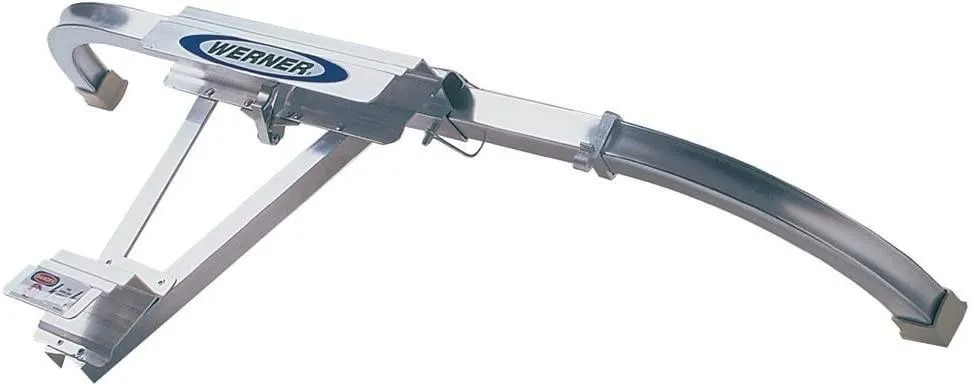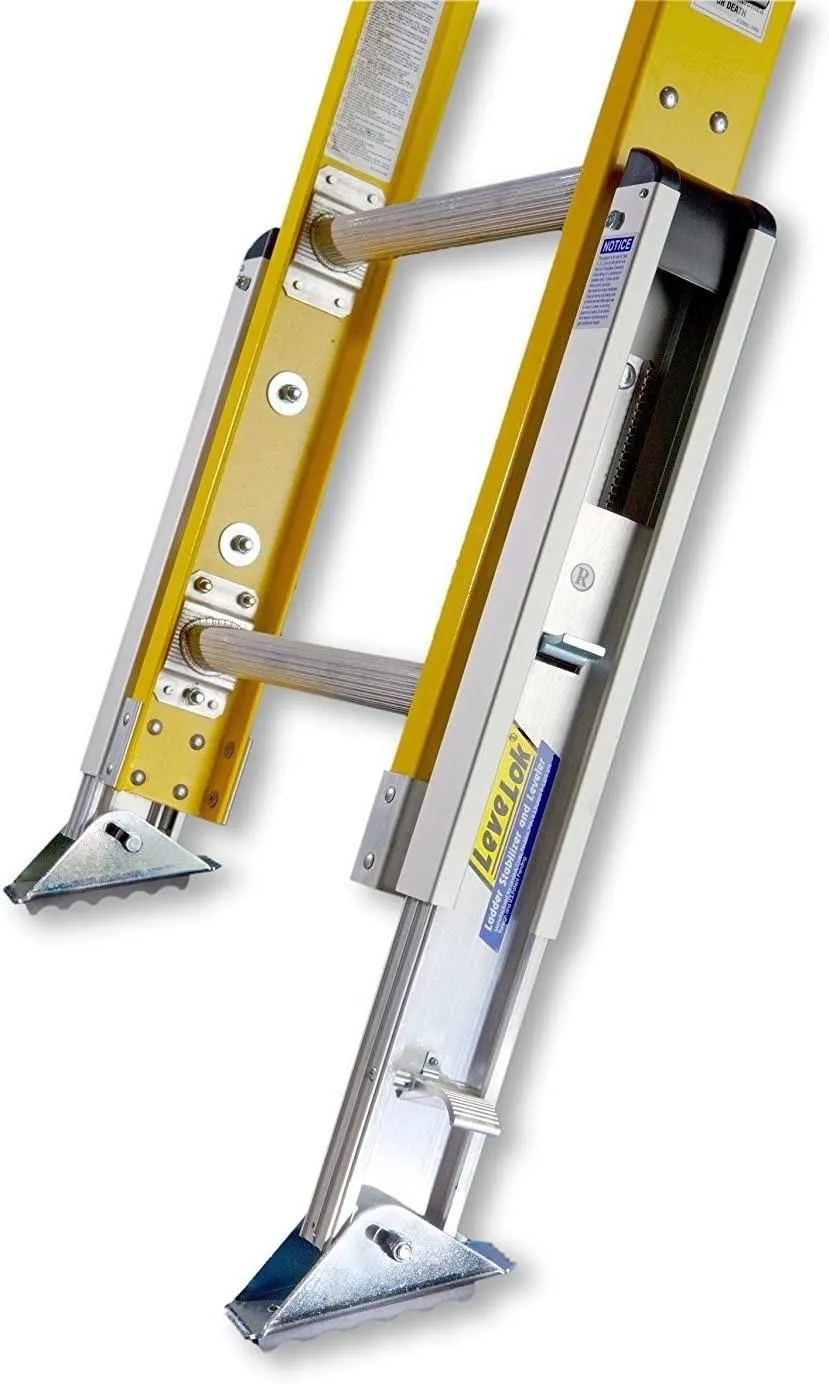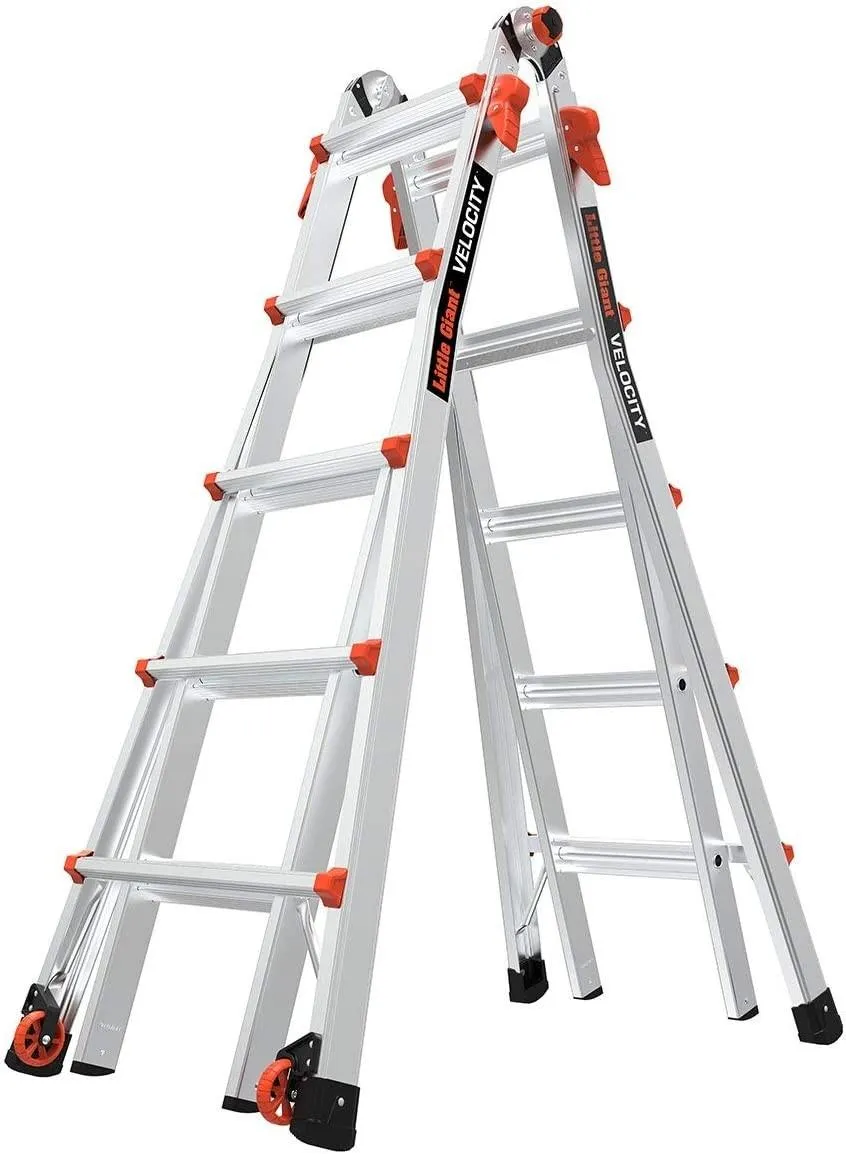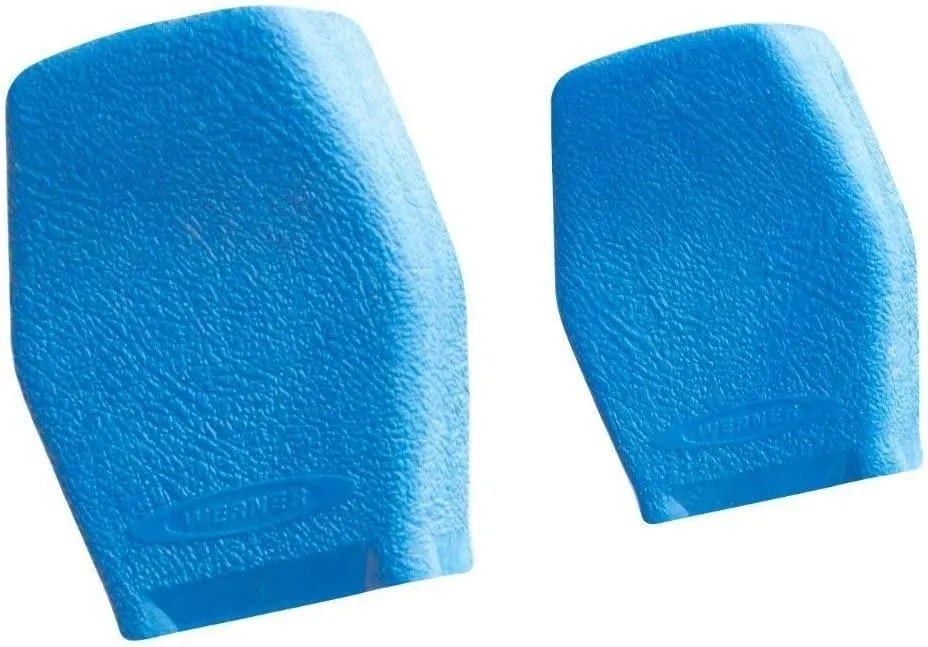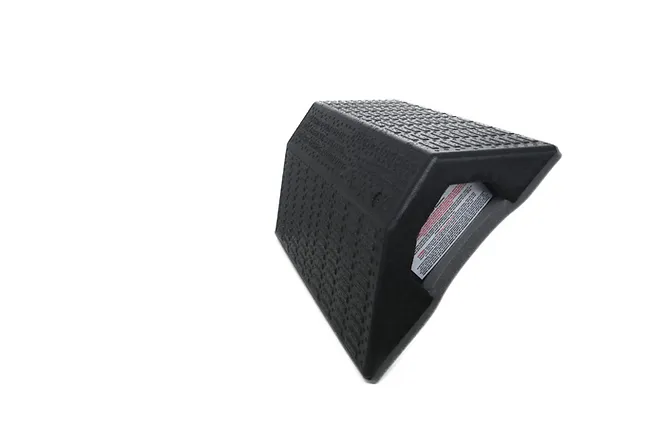All the Tools You Need to
Install Permanent Christmas Lights
Master the Art of Permanent Christmas Lighting:
Essential Tools for Every Professional Installer
Welcome to the ultimate resource for your permanent Christmas lighting installation business!
Our carefully curated selection of tools is designed to provide you with everything you need to
build a successful and permanent lighting service, catering to both seasoned
professionals and those just starting in the industry.
Boeray 11' Fiberglass Running Electrical Wire Cable Pulling Fish Tape Kit
Fiberglass better than Plated Carbon Steel, this fish tape will not break when folded, faster, easier pulls: low friction design allows the tape to easily glide through the conduit without binding at turns, joints or couplings;
Cougar Paws
Cougar Paws has been tested up to a 12/12 pitch; however, other measures must be taken for steeper pitches. The Peak Performer's 6" high uppers will protect you from rolling or stumbling as you make your ascent while still allowing the light coloration keep feet cool in hot sun conditions with asphalt roofs!
Pitch Hopper
The pitch hopper is a unique tool that allows you to get on any roof, no matter how high or steep it may be. It has many different variations so users can find one suitable for their needs- whether they want something quick with little effort or more challenging than what's been done before!
Elevate Your Permanent Christmas Lighting
Installations with Our Expert-Selected Tools
With these tools at your disposal, you're not just prepared to tackle any permanent installation challenge—you're equipped to excel. Our products are selected for their reliability, effectiveness, and ease of use, ensuring you can deliver exceptional, long-lasting results with every project. Whether you're expanding your services or just beginning your journey in the permanent Christmas lighting installation business, we're here to support your success every step of the way.
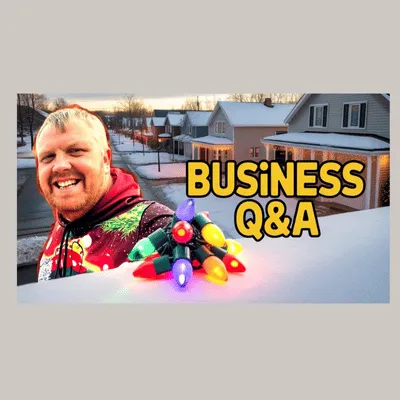
Christmas Light Q&A: Pricing, Installation, and Business Tips
Are you charging $6 per foot and wondering why you're not closing jobs? Stuck at $50,000 in revenue while hearing about installers doing $500,000 in the same market? Struggling to understand why customers choose your competitors over you?
You're not alone—and the answers might surprise you.
The difference between installers barely scraping by and those building six and seven-figure businesses has nothing to do with better bulbs, fancier clips, or secret installation techniques. It's about mindset, emotional selling, and understanding what customers actually buy when they hire you.
This comprehensive Q&A guide addresses the real questions Christmas lights installers ask—from pricing strategy and sales psychology to follow-up systems and technical specifications. Whether you're in your first season or looking to break through a revenue plateau, you'll find actionable answers that can transform your business immediately.
We'll cover recent success stories like the installer who turned a $1,000 estimate into a $6,000 sale by asking one simple question, explain why your competitor obsession is killing your growth, and reveal the exact follow-up sequence that converts hesitant prospects into paying customers.
Most importantly, you'll discover why you can't sell what you don't believe in—and how changing what you believe changes everything about your business results.
The next six weeks represent peak season. The installers who implement these strategies will close more high-ticket jobs than they thought possible. Those who continue selling bulbs instead of magic will wonder why another season passed them by.
Which group will you be in?
Let's dive into your questions.
Q: I'm struggling to close jobs at $6 per foot. Should I lower my prices to compete?
A: Absolutely not—and here's why lowering prices won't solve your problem. The issue isn't your pricing; it's your sales approach. If you can't sell at $6 per foot, you won't sell at $4 per foot either. The common denominator isn't the market—it's you.
Consider this recent success story: An installer went to quote what looked like a simple $1,000 roofline job. Instead of just measuring and pricing, he asked questions and listened. The homeowner mentioned grandchildren visiting—kids they only see once or twice yearly. That single detail transformed everything.
By listening and connecting the installation to creating magical memories for those grandchildren, the installer didn't just sell lights on a roofline. He added window wrapping, ground stake lighting, and two decorated trees. The final price? $6,000. The customer gladly paid because they weren't buying lights—they were investing in an unforgettable family memory.
The difference between struggling at $6 per foot and thriving at $10-$12 per foot isn't your market. It's whether you're selling bulbs or selling magic.
Q: How important is mindset in this business? Everyone says it matters, but does it really?
A: Your mindset is everything. What you believe, you will achieve—and this isn't motivational fluff, it's observable reality in the Christmas lights business.
If you believe customers in your area won't pay more than $6 per foot, you're 100% right. Not because your market can't support higher prices, but because your lack of confidence communicates itself in every sales conversation. When you don't believe you're worth $8-$10 per foot, that uncertainty undermines everything you say.
Consider installers operating in the same markets—Dallas, Virginia, Michigan, anywhere. In every single market, some installers charge $4-$6 per foot while others successfully charge $8-$12 per foot or higher. Same area, same customers, same competition. The difference? Mindset and sales approach.
Reading "Think and Grow Rich" isn't optional if you want to scale this business. Your brain is the most powerful tool you have. Feed it with growth-oriented content, surround yourself with successful people, and believe you deserve premium compensation for the expertise, service, and magical experience you provide.
Q: I know everything about my competitors—their pricing, reviews, service areas. Why am I still struggling?
A: Because you're focused on the wrong things. Many installers can recite detailed competitor information but can't tell you their own average ticket, close rate, or customer acquisition cost. This backward focus guarantees mediocrity.
When you obsess over competitors charging $4-$6 per foot, you make them more important than yourself. You're essentially telling your brain: "They're the standard. I'm just trying to match them."
Stop it. Right now.
Successful installers barely know what competitors charge. They're too busy serving customers, closing jobs, and depositing checks to worry about what someone else is doing. Focus on your metrics—average ticket, close rate, customer satisfaction. Improve those, and competitors become irrelevant.

Q: What's the secret to high-ticket sales? How do I get customers to pay $2,000-$6,000 for Christmas lights?
A: The secret is simple: stop selling products and start selling emotions. Listen—truly listen—to what customers tell you.
The number one key to growing a Christmas lights business is learning to listen. Not just hearing words, but understanding motivations, desires, and emotional drivers. Ask questions like:
"Why are you having lights installed this year?"
"What memories are you hoping to create?"
"Who will be visiting during the holidays?"
"What's special about this Christmas for your family?"
These questions uncover emotional triggers that justify premium pricing. When grandchildren are visiting, when it's someone's last Christmas due to illness, when families are reuniting after years apart—these situations create priceless value.
One successful installer never discusses bulbs or clips. She asks questions, listens intently, and sells based on the magic her service creates. Result? Over $500,000 annually in year four of business.
Do your customers care whether you "peak" the bulbs? Whether you use tough clips versus flex clips? No. They care about how their home will look, what their neighbors will think, and how their grandchildren's faces will light up.
Q: What average ticket should I target? I'm currently at $1,000 per job.
A: Target minimum $2,000 average ticket—ideally higher. Let's look at the mathematics:
$1,000 Average Ticket: Need 500 completed jobs to generate $500,000 revenue. That's substantial work—multiple crews, constant installations, significant logistics, management overhead, and massive liability exposure.
$2,000 Average Ticket: Need only 250 jobs for the same $500,000 revenue. Half the installations, half the roof exposure, half the risk—same revenue and likely higher profit margins.
The difference isn't in the lights. It's in value presentation and whether you believe you deserve premium compensation for the service, expertise, and magical experience you provide.
Successful installers operate with two-person crews completing 10-15 jobs daily at $2,000+ average tickets. That's $20,000-$30,000 daily revenue with minimal overhead—achieved through efficiency, systems, and processes, not massive crews.
Q: I sent out 20 quotes this week and haven't heard back. What's my follow-up strategy?
A: You need aggressive, systematic follow-up. With only six weeks remaining in prime season, persistence is critical. Here's the recommended sequence:
Day 1: Send text and email immediately after providing quote
Day 2: Phone call to confirm receipt and answer questions
Day 3: Text message with value-add content
Day 4: Email with customer testimonials or project photos
Day 5: Text touching on scarcity ("schedule filling quickly")
Day 6: Email with additional design ideas or add-on options
Day 7: Text message
Day 8: Phone call to close or move to next stage
Continue this pattern daily for two weeks minimum. Every day closer to installation deadlines increases urgency—use that psychological leverage.
Use AI tools like ChatGPT, Claude, or Gemini to generate personalized follow-up sequences. Provide customer details and request a 14-day campaign with varying messages emphasizing different benefits. This automation ensures consistent communication without overwhelming your schedule.
Q: How many C9 LED bulbs can I safely put on one electrical line?
A: Significantly more than you think. With modern LED C9 bulbs, the old limits don't apply.
A thousand feet of C9 lights (approximately 800 bulbs) draws only 2.4 amps—far less than the 10-amp draw of 120 incandescent bulbs from previous years. You can safely connect extensive runs without overloading circuits.
The practical limitation isn't electrical capacity—it's aesthetics and installation logistics. Use a kill-a-watt meter to measure actual amp draw rather than guessing based on outdated incandescent standards.
For mini lights, approximately 40 strands of 24-foot sets can connect on a single line. However, for large installations like Christmas trees, avoid running everything on one circuit. Instead, run an extension cord up the tree as a main power line, then branch off to different sections for better voltage distribution and redundancy.
Q: I'm afraid to answer my phone. What if I mess up the call? Should I just let people leave messages?
A: Every missed call potentially represents a $2,000-$5,000 job going to a competitor. Phone anxiety loses revenue—period.
You have two options: answer the phone yourself or hire someone to handle calls. Those are the only choices. If you're on a roof, hire phone coverage. The cost of answering service or part-time help is minuscule compared to revenue from converted leads.

In 2025, customers won't leave messages—they'll call the next installer on Google. Answer professionally and enthusiastically, or pay someone who will. Don't complain about missed opportunities if you're not willing to pick up the phone.
And here's the thing: what are they going to do, bite you through the phone? They're not going to eat you. Answer the call, be enthusiastic about creating magic for their home, and close the sale.
Q: Should I offer October discounts to book more jobs before the November rush?
A: Never discount in October. Here's what happens when you do:
Customers who book at discounted rates expect the same pricing when they refer neighbors or rebook next year. You're training them that your regular price is negotiable and inflated. This devalues your service long-term.
If you're fully booked in October, that's a signal to raise prices or hire additional crews—not discount. Early bookings at full price establish that your value justifies your pricing year-round.
The only acceptable discount framework: "Returning customers who schedule by October 31st receive 10% off" or "Your price won't increase from last year if you book early." Frame any discount as loyalty recognition or early-scheduling incentive, not desperation to fill the schedule.
Q: How do I respond when prospects say competitors are charging $4-$6 per foot and I'm "too expensive" at $8-$10?
A: Recognize you're serving different market segments. Budget installers attract price-sensitive customers comparing quotes down to the penny. Premium operators attract quality-focused customers valuing professionalism, reliability, and peace of mind.
When someone objects to your pricing, they're telling you they're not your ideal customer—and that's perfectly fine. Don't try to convert price shoppers. Instead, confidently explain your value:
"Our pricing reflects the expertise, insurance, professional equipment, and guaranteed satisfaction we provide. We focus on creating magical displays that become family memories, not just hanging bulbs. If you're looking for the absolute lowest price, we might not be the best fit, and I can respect that. But if you want a premium experience with zero hassle and stunning results, we're perfect for you."
Then stop talking. Let them decide. Converting price shoppers exhausts you and undervalues your service. Focus on customers who appreciate quality.
Q: What's the biggest mistake new installers make?
A: Two tied for first place:
Mistake #1: Not charging enough. Fear drives underpricing. New installers think charging $6 per foot is "safe" and $10 per foot is "risky." The opposite is true. Underpricing attracts problem customers, creates unsustainable margins, prevents hiring quality help, and establishes a low-value market position. Start at $8-$10 per foot minimum. You can always adjust down (though you won't need to), but climbing from $6 to $10 is nearly impossible with existing customers.
Mistake #2: Selling bulbs instead of magic. New installers talk about LED specifications, peak alignment, clip types, and technical details. Customers don't care. They care about how their home will look, what neighbors will say, and creating memories with family. Master emotional selling or remain stuck at low prices forever.
Q: When is the busiest time for calls, and how should I prepare?
A: The week of Thanksgiving traditionally generates the highest call volume—sometimes 100-200 leads daily for established businesses. Fridays and Mondays typically see the most activity, with November 15th through Thanksgiving representing peak opportunity.
This year's late Thanksgiving (November 28th) isn't ideal. Early Thanksgivings create an extra full week of November. Late Thanksgivings compress the season, with some customers deciding it's "too late" once December arrives.
Regardless of timing, expect dramatic volume increase after November 15th. Prepare by:
Ensuring adequate phone coverage (hire help if needed)
Having follow-up systems ready (CRM, email sequences, text templates)
Pre-bulbing and clipping lights for faster installation
Confirming crew availability and backup plans
Streamlining your quoting process for speed
Missed calls during peak periods represent thousands in lost revenue. Be ready to capture the surge.
Q: How important are reviews, and what's the best way to get them?
A: Reviews drive future growth. While they may not dramatically impact this season (unless you already have 50+), they'll determine next year's success.
Request reviews systematically after every installation—not just at completion, but throughout the customer journey:
During initial phone call: "Our goal is to make you so happy you'll give us a five-star review. Is there any reason you wouldn't give us five stars?"
Upon arrival: "We're committed to five-star service. What's most important to you today?"
At completion: Pull out your phone with QR code or tap card, making the review process immediate and effortless.

Don't limit yourself to Google reviews. Collect reviews on Yelp, Facebook, and any platform your target customers frequent. Multiple review sources improve credibility and reach different customer segments.
Make review requests non-negotiable part of your process. Every completed job should generate a review request within 48 hours.
Q: I'm discouraged because it's late October and I've only closed a few jobs. Is it too late?
A: October slowness is completely normal, especially for newer businesses. Don't panic—you're right on schedule.
November 15th through Thanksgiving represents peak season, with dramatic call volume increases. Many prospects browsing in September and October finally commit in November when weather changes trigger holiday mindset.
Use October for preparation:
Deploy yard signs aggressively (hundreds, not dozens)
Optimize social media presence and post daily
Perfect your sales process and practice emotional selling
Ensure phone coverage systems work flawlessly
Pre-bulb and clip lights for faster November installations
Follow up religiously with all existing quotes
The surge is coming. The question is whether you'll be prepared to capture it when call volume explodes. Successful installers often close more business in the two weeks before Thanksgiving than the entire preceding two months combined.
Q: What should I pay installers, and how do I structure performance pay?
A: Pay installers $0.80-$1.00 per linear foot for C9 installation, including bulbs and clips. For takedown, pay $0.20-$0.25 per foot.
Pre-bulbing and pre-clipping lights in your shop enables faster installation. Installers complete more jobs daily and earn more, while you generate higher profit per crew. It's win-win.
Performance pay keeps installers motivated and rewards efficiency. Fast, quality work earns them more per day than slow, sloppy installations. This naturally incentivizes the behaviors you want without micromanagement.
For crew leaders managing others, add $2-$5 per foot or a percentage of job value. Leadership compensation should reflect the additional responsibility of training, quality control, and customer interaction.
Q: How do I price wreaths when costs have increased so much?
A: With 60-inch commercial wreaths costing $600+ due to shipping and materials, pricing becomes challenging. Consider shifting strategy:
Option 1: Offer 48-inch wreaths instead—they cost significantly less ($200-$300), can still command $350-$500 retail pricing, and generate healthy margins.
Option 2: For customers specifically requesting 60-inch wreaths, charge $800-$1,000. Explain the premium: "The 60-inch wreath creates dramatically more impact and is what you see on luxury hotels and high-end commercial properties. It's a premium product with premium pricing."
Better to offer profitable 48-inch wreaths as standard, with 60-inch available as premium upgrade, than struggle with thin margins on oversized products.
Q: What's the best marketing strategy to make my phone ring right now?
A: Three strategies work best this late in the season:
Yard Signs: Deploy hundreds across target neighborhoods. Track which locations generate the most calls to identify and prioritize productive placements. Yard signs remain one of highest-ROI marketing investments available.
Facebook Ads: Lead costs typically $15-$30 per lead with optimized campaigns. Spend $50-$100+ daily now, scaling to $100-$200 daily from November 1st onward. If you close one job per six leads at $2,000 average ticket, that's a 6-9% customer acquisition cost—sustainable and profitable.
Google Business Profile Optimization: Post daily with photos of recent installations, behind-the-scenes content, and customer testimonials. Respond to every review immediately. Ensure your profile is complete with accurate hours, service areas, and contact information.
Combine these three strategies with aggressive follow-up on all existing quotes, and your phone will ring consistently through the season.

Q: Working weekends—is it necessary, or should I maintain work-life balance?
A: The next six weeks represent "go time"—when installation businesses generate the majority of annual revenue. Working weekends during this compressed timeframe makes strategic sense.
One installer recently closed a $6,000 job on Sunday, directly crediting weekend availability for the opportunity. The season's compressed nature means weekends represent 28% of available time—ignoring them significantly constrains earning potential.
After Christmas, take time off. Decompress, spend time with family, travel—whatever recharges you. But during these critical weeks, maximizing availability maximizes revenue and sets you up for financial success that funds your off-season lifestyle.
Think of it this way: work intensely for six weeks to earn what funds your entire year. That's a trade most entrepreneurs gladly make.
Q: What separates installers doing $500,000+ annually from those stuck at $50,000-$100,000?
A: Three primary differentiators:
Mindset: Six-figure installers believe they deserve premium pricing. They don't apologize for $10-$12 per foot rates. They confidently present value and let customers decide.
Emotional Selling: High earners sell magic, memories, and experiences—not bulbs and clips. They ask questions, listen intently, and connect their service to what matters emotionally.
Systems and Processes: Successful operators systematize everything—quoting, follow-up, installation, takedown, review requests. Systems enable scaling beyond personal involvement in every job.
Nothing special separates high-earning installers from struggling ones. Same markets, same customers, same competition. The difference is mindset, sales approach, and willingness to take consistent action despite uncertainty.
You can achieve $500,000+ annually. The question is whether you believe it, and whether you're willing to take the actions that make it inevitable.
Take Action: Your Next Six Weeks Start Now
You've just read the strategies that separate struggling installers from those building thriving six and seven-figure businesses. The question is: what will you do with this information?
Knowledge without action is just entertainment. You can read every article, watch every video, and study every successful installer's approach—but if you don't implement what you've learned, nothing changes. Your pricing stays the same. Your sales conversations stay the same. Your revenue stays the same.
The next six weeks represent the most critical period of your entire year. From now through the end of December, you'll generate the majority of your annual revenue. How you show up during this compressed timeframe determines whether you build a sustainable business or just create an exhausting seasonal job for yourself.
Here's your action plan for this week:
Today: Raise your pricing to minimum $8 per foot if you're not there already. Update your website, quotes, and sales conversations. Commit to believing you're worth it.
Tomorrow: Write out 5-7 emotional questions you'll ask every prospect to uncover what really matters to them. Practice asking and listening—not just waiting to talk about bulbs.
This Week: Deploy 100+ yard signs in target neighborhoods. Set up or optimize your Facebook advertising campaign. Follow up with every outstanding quote using the daily sequence outlined above.
Every Day: Answer your phone enthusiastically. Ask for reviews after every completed job. Believe you're the best installer in your market—because if you don't believe it, your customers never will.
Remember the installer who turned a $1,000 estimate into $6,000 by simply listening to a grandfather talk about his visiting grandchildren? That transformation didn't require better equipment, cheaper materials, or years of additional experience. It required asking questions, listening to emotions, and connecting the service to what truly mattered.
You can do this. Right now, in your market, installers are closing $2,000-$6,000 jobs at $8-$12 per foot. They're not special. They're not lucky. They simply believe in their value and sell the magic, not the bulbs.
Change your mindset. Change your sales approach. Change your results.
The season is here. Go time is now. What you do in the next six weeks will determine not just this year's success, but the foundation you build for years to come.
Stop making excuses about your market, your competitors, or your pricing. Stop waiting for perfect conditions. Stop selling bulbs when you should be selling magic.
Go answer your phone. Go close that $6,000 job. Go believe you're worth $10 per foot. Go create magical memories for families while building the business you deserve.
The only thing standing between you and the success you want is the decision to take action—right now, today, this minute.
Go make it happen.
Need supplies to fulfill all those jobs you're about to close? Fast, reliable shipping on professional-grade LED lights, clips, and accessories ensures you're never waiting on materials when customers are ready to book. Because the only thing better than closing a high-ticket sale is having everything you need to deliver an exceptional installation. Christmas Shop
Copyright ©2025 All Right Reserved website designed by christmaslights.io
Terms of Service / Privacy Policy
Have questions or need assistance?
Contact us at (855)619-LITE



